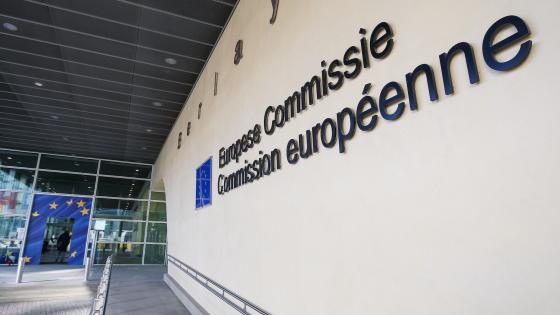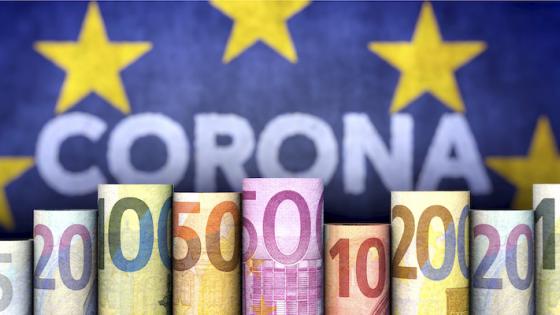In April 2023, the European Commission issued a concrete legislative proposal for the much needed revision of the Stability and Growth Pact (SGP).
The fiscal rules have effectively been inoperative since the Commission announced in March 2020 (in the wake of the pandemic) the activation of the severe economic downturn clause – in the public debate commonly called the ‘general escape clause’.
Тhe key objectives of the Commission proposals are a strengthened debt sustainability framework and the promotion of sustainable and inclusive growth through reforms and investments. These objectives should be achieved by focusing on medium-term fiscal performance, gradual and credible debt reduction, more national ownership, better enforcement, and simplification of the rules. Based on a debt sustainability analysis, the Commission will provide “technical trajectories” for Member States that violate one or both reference values of 3% and 60% for the deficit and debt ratio, respectively. With the technical trajectory as a starting point, countries may negotiate a four-year fiscal adjustment plan with the Commission. The adjustment period may be extended to seven years based on adequate reform and investment plans, provided the public debt ratio remains on a ‘plausibly downward’ path, or stays at a prudent level, and the deficit remains below the 3% reference value. A number of safeguards are added, such as an annual minimum adjustment of 0.5% of GDP when the deficit exceeds 3% and a debt ratio below the initial one at the end of the adjustment period. A major innovation is that the adjustment path stipulates a path for net primary expenditure.
There will be no technical trajectories for countries with debt below 60% and a deficit of less than 3%.
Finally, enforcement of the SGP, which has been weak so far, is supposed to be strengthened by reducing the financial penalty associated with violation of the rules, so the relevant actors should have less reason to shy back from imposing sanctions. A larger degree of national ownership by governments for their own plans and a strengthened supervisory role for the national independent fiscal institutions (IFIs), would raise the reputational damage of not meeting the criteria.
We agree that the new proposal, in particular by requiring a gradual reduction of debt over the medium term, stands a higher chance of achieving debt sustainability than the SGP rule book. In particular, the 1/20th rule, which would demand historically unprecedented primary surpluses from a number of countries, has been unrealistic, which has undermined the credibility of the SGP.
Still, the question remains whether the Commission is not unduly optimistic about improved enforcement, especially as adjustment periods longer than four years exceed the customary political cycle. In 2016, it proved impossible to impose even symbolic non-pecuniary sanctions on Spain and Portugal. Governments are loath to assign a greater role to the national independent fiscal institutions. The role of these institutions is to be critical about policies and, hence, they are often seen as a nuisance by governments. Ministries of finance, in particular, see them as questioning their assumptions or redoing their work. In view of a long history of transgressions of the rules followed by non-enforcement, enforcement through financial punishment cannot be taken for granted under the revised rules. Therefore, some countries, such as Germany, want stronger safeguards, such as a guarantee that debt at the end of the adjustment period is below the initial debt and an annual minimum debt reduction requirement. Indeed, only recently, supposedly well-aware of the fact that the escape clause will expire by the end of this year and Excessive Deficit Procedures may be opened again, the Italian government proposed a stimulus package of €24 billion for 2024, on top of a projected deficit of over 4%.
If financial sanctions are uncertain to work, what else would? We propose to introduce positive incentives for improved compliance and enforcement.
The experience with the Recovery and Resilience Facility of NextGenerationEU may provide guidance. Countries have designed reform and investment plans and receive funding conditional on achieving certain milestones. Although the process does not work perfectly (plans are too piecemeal and funding is disbursed despite imperfect adherence), the overall experience is considered as reasonably satisfactory. It may be worthwhile to expand and improve on the experiences so far of NextGenerationEU and provide for a mechanism in which countries, instead of being penalised for non-adherence, are rewarded for good behaviour.
Therefore, we propose to set up an EU fund for European public goods, i.e. public investments that benefit more than one country or even the entire EU, and from which (groups of) countries can get funding if they adhere to the agreed fiscal-structural plans. The purpose of EU public goods would have to be well-defined and may encompass, for example, climate and digital transitions as well as EU-wide infrastructure. The fund serves two purposes: providing an incentive to improve debt sustainability and stimulating investments that are much needed (e.g. Beetsma et al. 2020, Larch et al. 2022), but that otherwise would not come about, because they are too large for individual countries and insufficiently worthwhile at the individual country level, because the benefits accrue to other countries as well. Examples of such investments are high-speed railways, increases in the capacity of electricity grids, hydrogen infrastructure, and water management. In particular, the investments fulfil the requirements underlying the extended adjustment path from four to seven years: growth enhancing, supporting fiscal sustainability (by raising potential growth and incentivising fiscal discipline), and addressing common EU priorities, such as the Green Deal.
How could this exactly work? Having committed to their fiscal-structural trajectory (combinations of) countries submit sufficiently detailed plans for investments with a ‘public good character’.The Commission itself may also propose EU-wide investment projects which would be subordinate to the same requirements for national disbursement. The investment plans may also form part of the bid to extend the adjustment period to seven years. They contain a set of concrete milestones with associated funding needs for each next stage. At each milestone, those partners that have stuck to their fiscal-structural plan and to the investment plan itself, get the financing (or part of it) of the previous stage reimbursed from the fund. Hence, financing from the fund takes place afterwards, in order to strengthen the incentives for good behaviour.
A crucial role in the process will be for an independent assessor of the investment plans and their execution. This would need to be done by an EU-IFI, which looks in detail at the investment case itself: can a sufficiently large positive net present value be demonstrated for the project? Can sufficiently large international spill-over benefits be demonstrated? Does each country have sufficient skin in the game, i.e. is there sufficient co-financing at each stage? Finally, after each milestone the EU-IFI assesses whether the project has been executed according to plan and whether partners have adhered to their fiscal-structural plan. In line with standard governance rules, the EU-IFI draws up a publicly available report at the start and at each stage of the project with its assessment and recommendation for the European Commission. The Commission then formulates its own recommendation to the ECOFIN, which then takes a decision.
The financial design of the fund could be as follows. Countries have envelopes within the fund based on the size of their economy and draw at a maximum the size of their envelope (e.g. European Fiscal Board 2022). The financial resources of the fund would need to be sizeable in order to provide sufficient incentives for good behaviour. The design of the fund sees to it that disbursement would only come about when fiscal-structural plans are adhered to. This helps avoid that European expenditures are simply piled upon national expenditures. If they do not use the financial resources within a prespecified period of time, because they have no eligible plans or because they have not fulfilled the EU budgetary criteria, the remainder of their envelope will be re-allocated to the other envelopes. The resources withdrawn from the fund can be financed by issuance of EU debt, similar to the financing of NextGenerationEU’s Recovery and Resilience Plans. Debt only needs to be issued at the moment resources are withdrawn. Obviously, countries need to commit to their share of the debt-servicing costs.
That share is based on a fixed repayment key, independent of the extent to which a country has made use of its envelope. Hence, the fixed key incentivises each country to come up with suitable investment proposals. The incentive is strengthened further by the reallocation of any unused funds over the other envelopes.
In this column, we have described a fund for investments with multinational spillovers to which countries have access if they adhere to their budgetary plans. We also believe this is politically feasible. The described fund, which is kept outside the regular multiannual financial framework, would be a follow-up to NextGenerationEU, but with a much stronger focus on European public goods. Admittedly, NextGenerationEU was meant to be temporary, but in the meantime the urgency to formulate a European response to the changed global economic power structures has increased significantly. An EU-wide investment fund, financed by borrowing as was NextGenerationEU, would serve this purpose as national public finances, strained by rising interest rates, are not up the task. The fund would have as additional advantage that investments would be safeguarded from the need of fiscal adjustment, because needed expenditure cuts to stay on the trajectory would not affect investments financed under the EU investment plan. In this way these investments are protected against political opportunism. This construction simultaneously serves two possible objectives: promote debt sustainability and promote growth-enhancing and climate-benefitting investments that would not materialise, otherwise. It would have a stabilising effect due to the positive effect on potential growth and the budgetary discipline that is enforced at the same time. Therefore, moving towards fulfilling both objectives will help to alleviate the burden on the ECB as fiscal restraint and higher growth both promote debt sustainability, thereby reducing the chance that the ECB will be confronted with a trade-off between achieving its monetary policy objectives and averting a financial crisis.
Authors’ Note: The authors thank Martin Larch and Ramon Marimon for insightful discussion. The views expressed in this column are the authors’ personal views and do not necessarily represent the view of any of the institutions they are of have been affiliated with.
References
Beetsma, R, L Codogno and P van den Noord (2020), “Next Generation EU: Europe needs pan-European investment”, VoxEU.org, 9 November.
Blanchard, O, A Sapir and J Zettelmeyer (2022), “The European Commission’s fiscal rules proposal: a bold plan with flaws that can be fixed”, Bruegel Blog post, 30 November.
Buti, M, J Friis and R Torre (2023), “The emerging criticism of the Commission proposal on reforming the European fiscal framework: A response”, VoxEU.org, 10 January.
Council of State of the Netherlands (2017), The State of the Euro, The Hague.
Eichengreen, B and U Panizza (2014), “A Surplus of Ambition: Can Europe Rely on Large Primary Surpluses to Solve its Debt Problem?”, NBER Working Paper No. 20316.
European Commission (2022), "Communication on orientations for a reform of the EU economic governance framework", COM(2022) 583 final, 9 November.
European Commission (2023a), "Proposal for a regulation of the European Parliament and of the Council on the effective coordination of economic policies and multilateral budgetary surveillance and repealing Council Regulation (EC) No 1466/97", COM (2023) 240 final, 26 April.
European Commission (2023b), "Proposal for a Council Regulation amending Regulation (EC) No 1467/97 on speeding up and clarifying the implementation of the excessive deficit procedure", COM (2023) 241 final, 26 April.
European Commission (2023c), "Proposal for a Council Directive amending Directive 2011/85/EU on requirements for budgetary frameworks of the Member States", COM(2023) 242 final, 26 April.
European Fiscal Board (2020), Annual Report, Brussels.
European Fiscal Board (2022), Annual Report, Brussels.
Larch, M, P Claeys and W van der Wielen (2022), “The scarring effects of major economic downturns: The role of fiscal policy and government investment”, EIB Working Paper No. 2022/14, Luxemburg.
Micossi, S (2023), “On the Commission’s orientations for a revised economic governance in the EU”, VoxEU.org, 23 February.
Wyplosz, C (2022), “Reform of the Stability and Growth Pact: The Commission’s proposal could be a missed opportunity”, VoxEU.org, 17 November.



